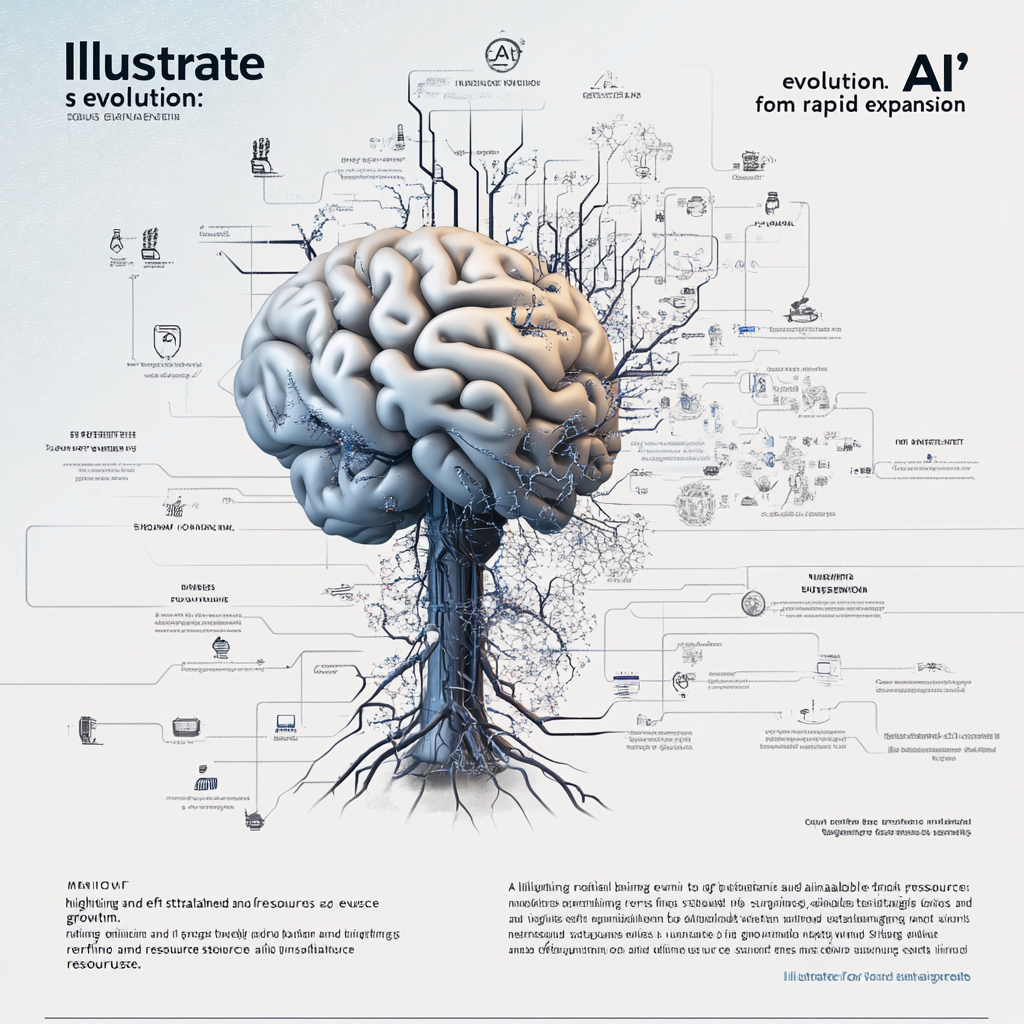
Gradual Progress Prevails in AI Evolution
The Unruly Race of AI: Why Slow and Steady is the Winning Strategy
In the whirling maelstrom of artificial intelligence, where dazzling breakthroughs pop up like mushrooms after a rainstorm, an unexpected revolution is bubbling beneath the surface. The age-old adage "slow and steady wins the race" is gaining traction, pushing back against the prevailing belief that bigger equals better. This narrative shift may not make the headlines like the latest AI marvel, but it’s one that could reshape the landscape of machine learning as we know it.
A Rocket Ride: The Ascent of AI
Remember the giddy days when ChatGPT burst onto the scene two short years ago? Oh, how the world of AI buzzed with excitement! Fortune and fervor united as tech moguls, startups, and every code-slinging guru funneled billions into concocting colossal language models, convinced that they were mere steps away from achieving the fabled artificial general intelligence (AGI). The industry was a runaway train, and who could blame them? The promise of revolutionary AI tantalized many like a mirage in the desert.
Hitting the Wall
However, as the dust began to settle, a grim realization took hold. Recent reports have hinted at a slowdown, a plateau, if you will. Despite flexing their monetary muscles, improvements in large language models (LLMs) have started to dwindle. The days of easy wins through sheer scale are becoming increasingly rare, leaving many experts scratching their heads in bewilderment.
Gary Marcus, an undeniably sharp critic and AI aficionado, has been waving a red flag for quite some time. He reminds us that hoping LLMs will evolve into AGI by merely jacking up their size is about as realistic as suggesting that a toddler can run a marathon by wearing bigger shoes. While corporations like OpenAI and Microsoft bask in sky-high valuations, Marcus declares, “We’re chasing a fantasy.” Wise words, indeed.
The Language Data Dilemma
Let’s talk turkey — or in this case, language data. One of the core dilemmas we’re staring down is the finite pool of language data available for training AI models. Scott Stevenson, the sharp-minded CEO of Spellbook, warns against being overly reliant on language as the golden ticket for scaling. “Some labs were too caught up in feeding in more language, thinking it would eventually lead to genius-level AI,” he asserts. Spoiler alert: It doesn’t work that way.
Sasha Luccioni from Hugging Face is on the same wavelength, voicing her belief that prioritizing size over purpose was bound to hit a limit eventually. “The pursuit of AGI has always been unrealistic, and the obsession with size is a dead-end road that's now revealing its pitfalls,” she states with clear conviction.
A Road Less Traveled
So, with reality biting at our heels, companies such as OpenAI are recalibrating their focus. Rather than racing to create mammoth models, they’re now getting razor-focused on utilizing what they already have in more efficient and effective ways. Enter OpenAI’s recent o1 model, which aims to bolster accuracy through improved reasoning skills — not just a fancier calculator crammed with data. This shift has sparked what can only be described as “radical improvements” by encouraging the model to spend more time contemplating before it regurgitates an answer, moving us closer to a more thoughtful AI.
Learning to Reflect
Here’s a juicy analogy for you: imagine the advanced LLMs as students transitioning from high school to university. Stanford professor Walter De Brouwer likens this evolution to society's growing need for a more thoughtful and considered approach. “The AI baby was a chatbot full of improv' and far too prone to mistakes,” he muses. He continues, “Now we're entering a phase where the Homo sapiens approach of taking a beat to think before leaping is being adopted.”
A Balancing Act: Economics Meets AI
The rising trend of AI experimentation is sending economic ripples through the landscape. Consider for a moment the price tag of training these frontier AI models — a staggering jump from a mere $1,000 back in 2017 to nearly $200 million in 2024, with whispers of billions to come by the end of the decade. To sustain this armada of cash flow, there’s a pressing need for sustainable business models that actually deliver significant productivity gains. Otherwise, that seemingly robust investment train might hit a wall. It’s the age-old dilemma wrapped in a new package: Slow and steady, folks.
Conclusively Futuristic
As we navigate this winding road of AI development, it becomes increasingly crystal clear that the era of frenzied growth is yielding to a more methodical approach. We are moving beyond the mindless quest to simply “scale up” and embracing a more targeted strategy aimed at leveraging existing breakthroughs for specific tasks. It’s a refreshing change of pace, and one that stands to create developments that are not only sustainable but meaningful.
Scott Stevenson succinctly captures this sentiment: “Instead of throwing more fuel onto the fire in the form of data and computing power, it’s time we direct our efforts toward specific tasks.” This embrace of deliberate progress is sounding like a sustainable melody for the AI sector, and one that could resonate far into the future.
As we tread carefully into the unfolding narrative of AI, let's remember that, much like in a well-paced race, a steady gait coupled with smart strategy often leads to the finish line first.
Stay in the Loop
Want to stay up to date with the latest news on neural networks and automation? Subscribe to our Telegram channel: @channel_neirotoken
In the winding road of AI, "slow and steady" isn’t just a quaint slogan; it’s a roadmap to meaningful progress.

